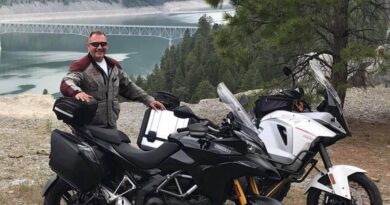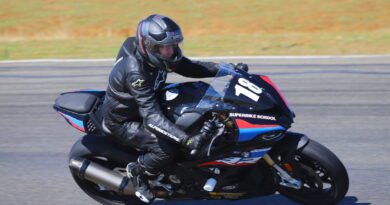Our own worst enemy
Partly because it was a gorgeous spring day, and partly because I’m “in training” for the trip to this year’s rally, I stayed out on my bike for 11 hours yesterday. It was a mix of interstate droning and backroad blitzing, mainly in the North Georgia mountains surrounding the famous T.W.O. motorcycle campground in Suches. I was accompanying two riding buddies on their way to Road Atlanta for a weekend of AMA races, though I peeled off and headed back home shortly before reaching the track. Both of these friends have genuine road racing resumes of their own and can easily run away from me in the twisties. I had no chance whatsoever of hanging with them, were it not for their repeated encounters with lumbering country traffic and their generous break-taking to let me catch up.
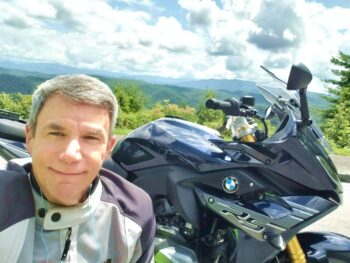 Despite the fact my inclusion on this ride was like dragging an anchor, these guys were thoroughly good-natured about our sharply contrasting skill levels, never once displaying the slightest hint of impatience or frustration. I was confident they harbored zero ill-will toward me and I felt no pressure to ride over my head. Nevertheless, I did push my R 1250 RS harder than ever before during my eight months of ownership. I would characterize some previous outings as having featured a brisk pace on sinewy mountain roads, mostly with the big boxer barely flexing in the middle of the tach, its copious torque delivering plenty of thrust with no apparent effort and little need for shifting. The effect was a delightful juxtaposition: relaxed exhilaration. By contrast, yesterday I found myself frequently winding out the very same motor and feverishly rowing through the gears in my attempts to hustle this bike in a new way. It did not go well.
Despite the fact my inclusion on this ride was like dragging an anchor, these guys were thoroughly good-natured about our sharply contrasting skill levels, never once displaying the slightest hint of impatience or frustration. I was confident they harbored zero ill-will toward me and I felt no pressure to ride over my head. Nevertheless, I did push my R 1250 RS harder than ever before during my eight months of ownership. I would characterize some previous outings as having featured a brisk pace on sinewy mountain roads, mostly with the big boxer barely flexing in the middle of the tach, its copious torque delivering plenty of thrust with no apparent effort and little need for shifting. The effect was a delightful juxtaposition: relaxed exhilaration. By contrast, yesterday I found myself frequently winding out the very same motor and feverishly rowing through the gears in my attempts to hustle this bike in a new way. It did not go well.
Although the shift-cam 1250 is a willing revver, there’s something incongruous about wringing its neck. I never got into a rhythm, never found the right combination of engine braking and acceleration response in some theoretical sweet spot high on the tach. I was constantly lurching, never in quite the right gear (remarkable for such a flexible powerplant), and unable to pay consistent attention to line selection and other basics. I was the antithesis of smooth. Even though it’s been a long time since I had a sport bike with a peaky inline four, somehow the mental program for going fast on such machines had reloaded in my brain by default, since I’d never before tried to extract this much velocity from an opposed twin. Mine was undoubtedly the wrong approach for multiple reasons.
First of all, for me, managing the motor’s power output at high rpm proved seriously distracting, since I didn’t possess the deft (well-practiced) throttle control and gear selection algorithms appropriate for this bike in this context. Clearly, I’d need to develop some new skills if I wanted to increase my speed on a boxer. Secondly, I realized afterward those high rpms probably contributed to the bike’s seeming reluctance to turn, due to the additional gyroscopic effect generated by its heavy flywheel. Even at its best, the RS – while sporty – is no sport bike. I’m sure a better rider could flick it into tight corners more easily than I could, but this bike lacks the agility that would have fit the old corner attack programing reactivated in my mind.
Then there was the fear.
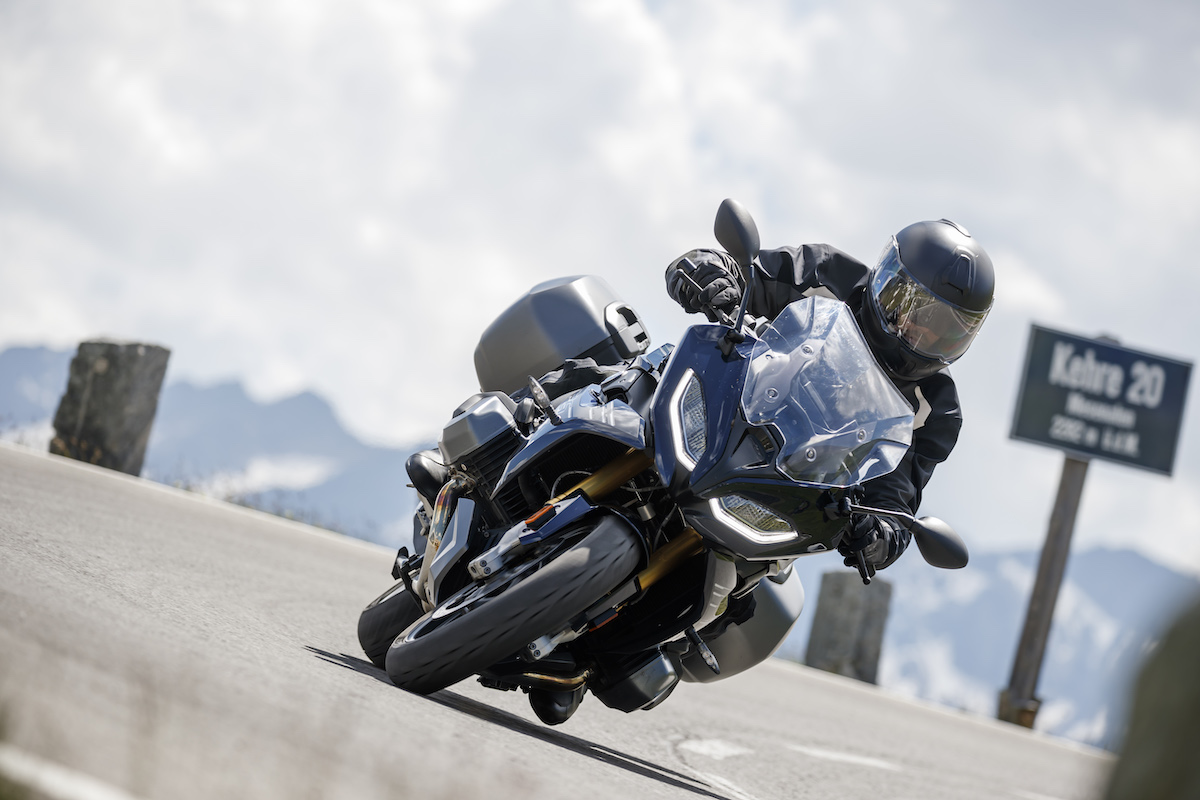
Another factor contributing to my distraction was the momentum of a bike over 100 pounds heavier than the machines I used to ride in this much haste. I’m fully aware many riders have come to terms with the challenges of hefty hardware, and such machines are capable of far greater performance than I’ll ever be able to command. I’m a long, long way from being comfortable throwing this much weight around on mountain switchbacks with sheer drop-offs a couple of feet from the pavement’s edge. The convergence of erratic acceleration, reluctant steering, hurtling mass, and high stakes yielded far more than the optimal level of anxiety, which in turn interfered further with my ability to discern and execute a workable operational formula. While I certainly wasn’t riding at the ragged edge of my bike’s abilities, I was pushing the edge of my own personal envelope.
I should say I was at the edge of one of my envelopes—the emotional one; more on that in a moment. The other envelope would be my skill set, which I’d definitely exceeded. While learning almost always involves stepping outside one’s comfort zone and pressing into previously uncharted frontiers, there’s a huge difference between doing this in a careful, systematic manner likely to produce constructive advances in proficiency, and trying to tackle too many challenges at once without enough organized concentration to make progress anywhere. I was guilty of the latter. Whereas I easily concluded many things about my approach were surely wrong, I can’t say I figured out how to do anything right.
Well, that’s not quite true—I did realize I need to go back to fundamental, time-tested principles like focusing on being smooth first, with increased speed coming as a natural byproduct. I really do know better than how I behaved yesterday, but I got “determined” in an extremely counterproductive way. My riding buddies were quite patient with me, but I was not.
There’s another element here worth noting: I haven’t done any serious sport riding in many years. Despite having attended a dozen track schools and having spent most of my weekends in the 1990s running back and forth on Deal’s Gap (the Tail of the Dragon, before it became more than a local secret), my sporting proficiency has decayed tremendously over the past two decades as such derring-do gradually lost its appeal and I spent less and less time engaged in it. I can remember leaning far and abruptly, braking extremely hard at the last moment, rocketing out of corners with the front tire barely skimming the asphalt, and doing all these things with a modicum of confidence. Don’t get me wrong—I was still perpetually the slowest in my group, and part of what I’m calling “confidence” was merely the illusion of invulnerability that went with being younger. I wasn’t daring enough to truly flirt with the limit or I’d have surely overstepped it on occasion. Fortunately, I managed to survive those years without ever contacting the ground, except for several rare moments of kissing the deck with a knee puck. I’m not boasting about my wreck-less record, but pointing to it as evidence I never rode nearly as hard as those around me, all of whom had crashed multiple times and considered those experiences instructive necessities on the way to a level of competence I never achieved. I’ve never been a fast guy, but I vividly remember being faster than I am now.
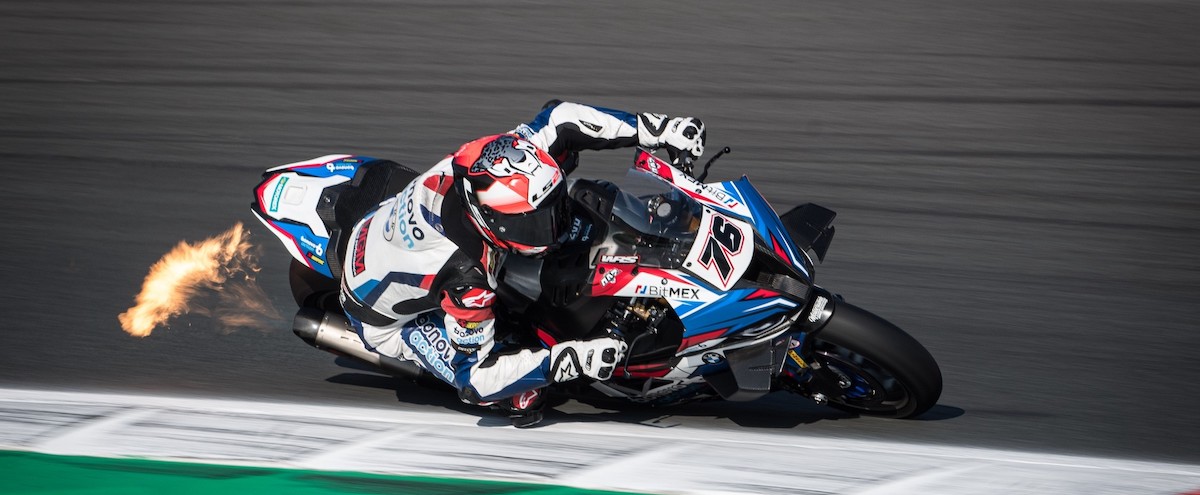
Photo courtesy of BMW Motorrad Motor Sports.
Yesterday, my memories of what’s possible (only given numerous circumstances no longer extant in my present life) fought viciously with the fearful feelings I had while trying to push the RS. Aside from the inappropriate protocols for operating this particular bike, one portion of my mind kept insisting I should trust the front tire’s traction more and wait later to brake. It chastised me for my herky-jerky throttle, critiqued my atrocious lines, and winced at every ill-chosen and sloppily executed gear shift. Although much of this perspective involved judgements based on obsolete calculations, it was absolutely correct in contrasting my abysmal technique with the ideal practices of safely swift motorcycle control. These critical, demanding thoughts kept crashing against repetitive flashes of panic and ever-present resistance—feelings generated by fantasies of flying off the side of the mountain, getting airlifted to a trauma center, or at least incurring several mortgage payments’ worth of damage to my bike.
OK, that was a bit hyperbolic. I didn’t actually let things get as dramatic as the prior sentence implies. When I’d catch myself becoming alarmed, I’d back off, calm down, and reinstate a more moderate mindset. But the war between my thoughts and feelings persisted, with the former spurring me on to ignore my apprehensions as absurdly exaggerated, and the latter yelling accusations of foolhardiness and emphasizing potentially catastrophic risks. Obviously, this is no way to have fun on a motorcycle, nor is it any way to improve my riding. Both sides of this battle contained truths and fictions, and what I needed was a less pressurized forum for integrating their respective valid points. Good training and effective practice allow gradual experimentation so the recalibration of feelings can keep up with what’s being learned.
Despite all those hours in the saddle, I made no gains yesterday as an RS pilot, but I did realize something about the process of skill deterioration. This is implicit in how we talk about becoming “rusty,” but it bears explicit recognition. When skills go unused, we don’t only lose the associated physical capabilities, we lose the related emotional capacities, too. When I tried to resume a type of riding I hadn’t done in decades, I lacked the required confidence and psychological equilibrium, along with the operational skill set (which wouldn’t have translated neatly onto my current mount, anyway). In the absence of both skill and calm, a ride that should have been pure bliss was often fraught with unpleasant, distracting tension. Fortunately, I had the presence of mind to keep resetting my attitude and my affable companions made no contribution to my internal conflict.
What we know about proper riding can get pushed aside as other forces do battle within us; the degree to which this can happen may be startling in retrospect. I recount yesterday’s ride not as a model for how to do things, but as a cautionary tale. We’re all vulnerable to warring thoughts and feelings. Such infighting costs us enjoyment, and possibly much more. When such conflicts break out, we can be our own worst enemies.
Mark Barnes is a clinical psychologist and motojournalist. To read more of his writings, check out his book Why We Ride: A Psychologist Explains the Motorcyclist’s Mind and the Love Affair Between Rider, Bike and Road, currently available in paperback through Amazon and other retailers.

